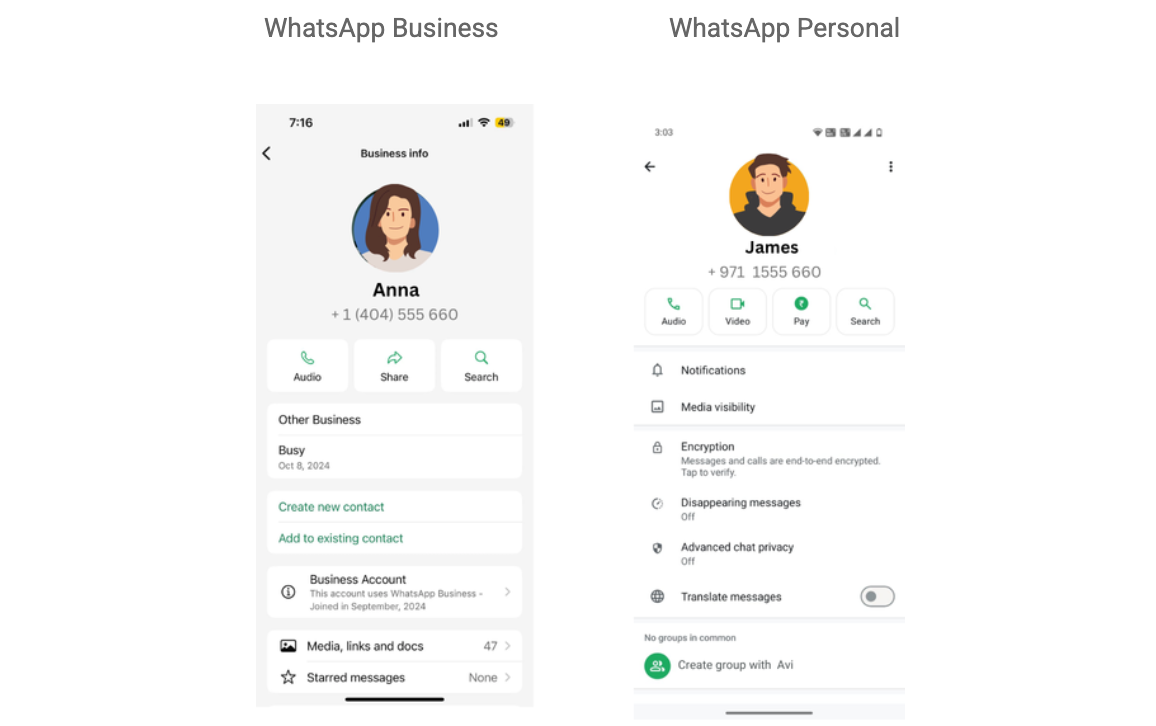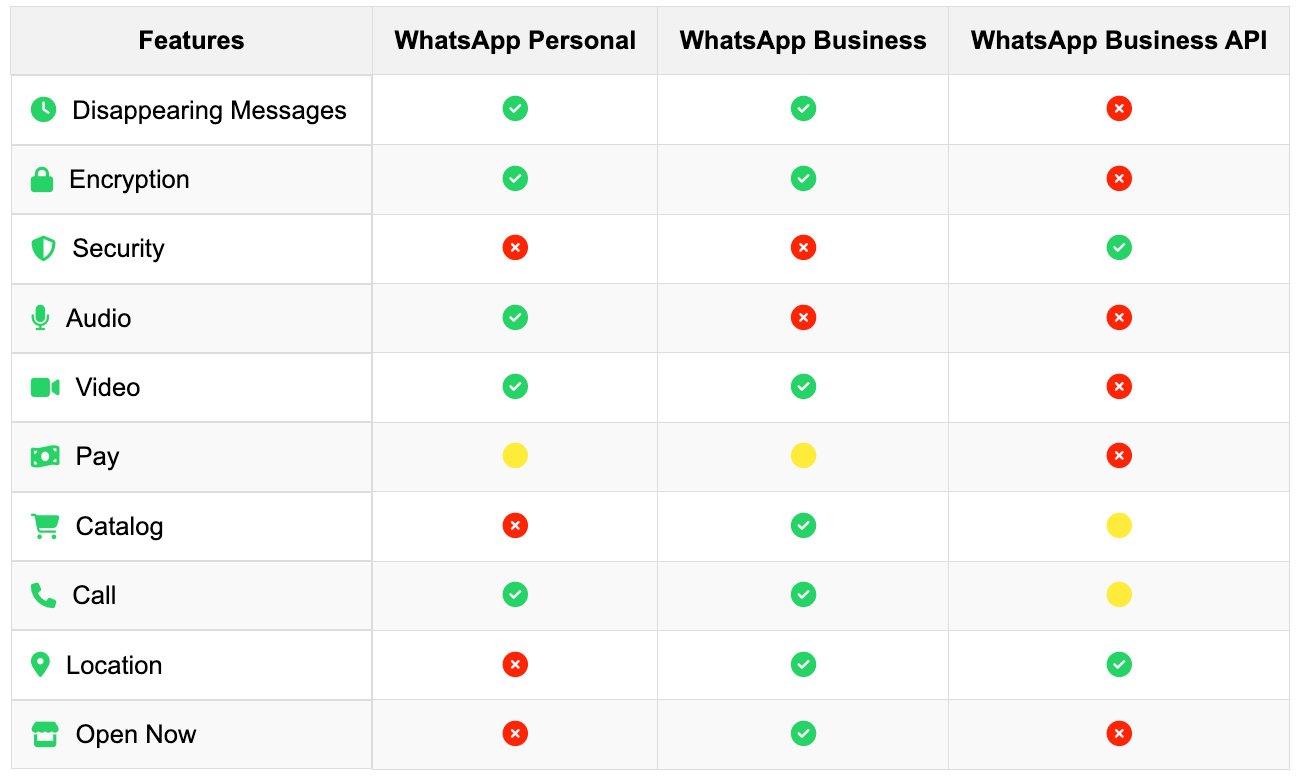How to Identify a WhatsApp Personal, Business, or API Account from the Account Profile Page
Spot WhatsApp account types via the Profile Page! Personal: No label, simple bio. Business App: "Business Account" tag, hours, address, optional green tick. Business API: Same tag, often verified, Meta secure service notice. Check these to verify contacts and set expectations.
WhatsApp has evolved far beyond simple personal messaging, now offering specialized tools for businesses of all sizes. However, as a user chatting with friends, family, or companies, it can be confusing to tell if you're interacting with a casual contact or a professional entity. This quick guide breaks down how to identify the three main WhatsApp account types—Personal, WhatsApp Business App, and WhatsApp Business API - directly from within the WhatsApp app on your phone (Android or iOS). We'll focus on visual and interactive cues, especially in the profile page, to make it easy for you to spot the differences.

By understanding these distinctions, you'll know when to expect automated responses, business hours, or enterprise-level support. With different types of accounts on WhatsApp, it's useful to know who you're communicating with. You can usually tell the difference just by looking at the profile and the chat screen. Here’s a simple guide to help you distinguish between them.
Step-by-Step: How to Check an Account Type in the WhatsApp App
- Open the Chat: Start a conversation with the contact or business (or search for their number via the "New Chat" button).
- Access the Profile: Tap the contact's name (or number) at the top of the chat screen. This opens the Profile Page, where all the magic happens.
- Scan for Clues: Look for labels, badges, and sections like "About," "Business Info," or security notices. We'll detail these below.
- Bonus Check – Chat Window: Scroll to the top of the chat for a privacy/security label (e.g., end-to-end encryption details). This can hint at API use.
Now, let's compare the profile pages side-by-side. These differences are visible to you as the end-user without needing special access.
Quick Comparison Table of Elements in WhatsApp Profile Pages:

The Profile Page Comparison
The easiest way to tell the difference is by opening the contact's profile page. Here’s what to look for in each case:
1. WhatsApp Personal Account
This is the standard account used by friends and family.
- Profile Name: Just the name the user set.
- Badge/Label: No special badge or label.
- About Section: A personal status message.
- Business Information: None. You will not see business hours, a website, or an email address.
- Catalog/Products: No catalog option is available.
- Common Use Case: Personal communication.
2. WhatsApp Business Account
This is used by small and medium businesses, like your local bakery or plumber. It has two sub-states: Unverified and Verified.
- Profile Name: The business name.
- Badge/Label: Displays a "Business Account" label.
- If Meta has confirmed this is an authentic business, it will show a blue checkmark next to the name and the label will read "Verified Business Account".
- If not, it will simply say "Business Account" without a checkmark. - About Section: Often describes the business.
- Business Information:
- Address: May show the business's physical location.
- Business Hours: Shows when the business is open.
- Website/Email: Links to the business's online presence.
- Catalog/Products: A key feature! You will see a "Catalog" tab where you can browse products and services.
- Common Use Case: Small businesses, sole proprietors, local services.
3. WhatsApp API Account
This is the WhatsApp Business Platform, used by mid to large enterprises (e.g., Netflix, BMW, airlines) for notifications, support, and marketing. It appears as a highly verified Business Account.
- Profile Name: The official brand name.
- Badge/Label: Features a blue checkmark and is labeled "Official Business Account". This is the highest level of verification.
- About Section: Official description of the brand or service.
- Business Information: Will always include a Website link to the official company site.
- Catalog/Products: May or may not have a catalog, depending on its use case (e.g., a support account might not).
- Common Use Case: Large brands, customer support, automated notifications (shipping confirmations, boarding passes, etc.).
Other Smart Ways to Identify WhatsApp Type:
Disappearing Messages:

- WhatsApp's Disappearing Messages feature automatically deletes new messages from a chat after a set period. This feature is part of WhatsApp Personal and WhatsApp Business, but not enabled for the WhatsApp Business/Cloud API accounts. For WhatsApp Coexistence users, this feature gets disabled as well after registering for the WhatsApp API.
Encryption:
Encryption End-to-end keeps your personal messages and calls between you and the person you’re communicating with. No one outside of the chat, not even WhatsApp, can read, listen to, or share them. WhatsApp Personal and Business have an Encryption label in the account profile

Security:
WhatsApp secures your messages and calls with this business. You are always in control of the conversation. A WhatsApp API account has a Security label in the account profile

Search

- The search icon in the account profile is enabled in WhatsApp personal but not in WhatsApp Business and API accounts
By checking the profile details, you can quickly identify the type of account you're interacting with, helping you understand the context and purpose of the communication.